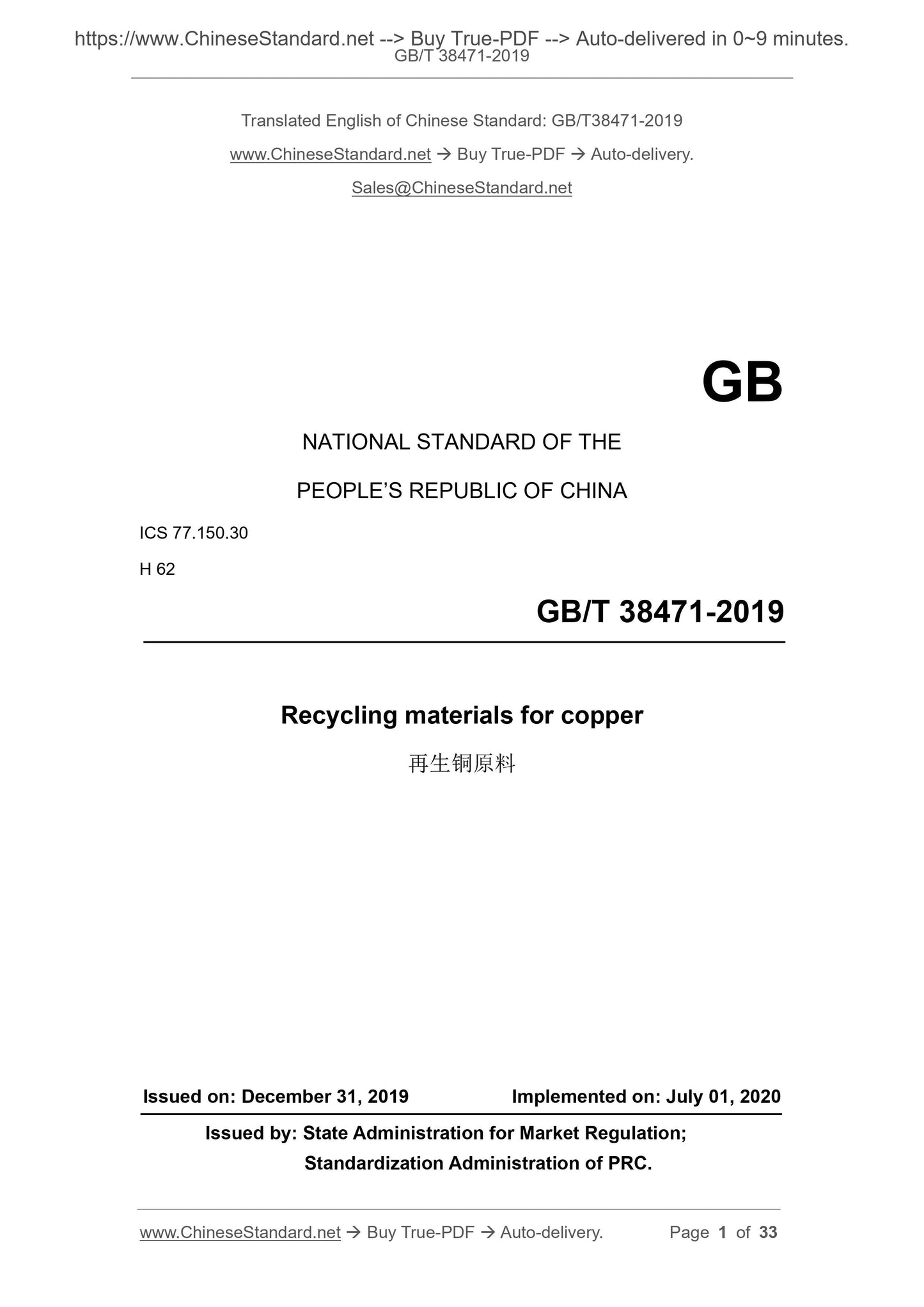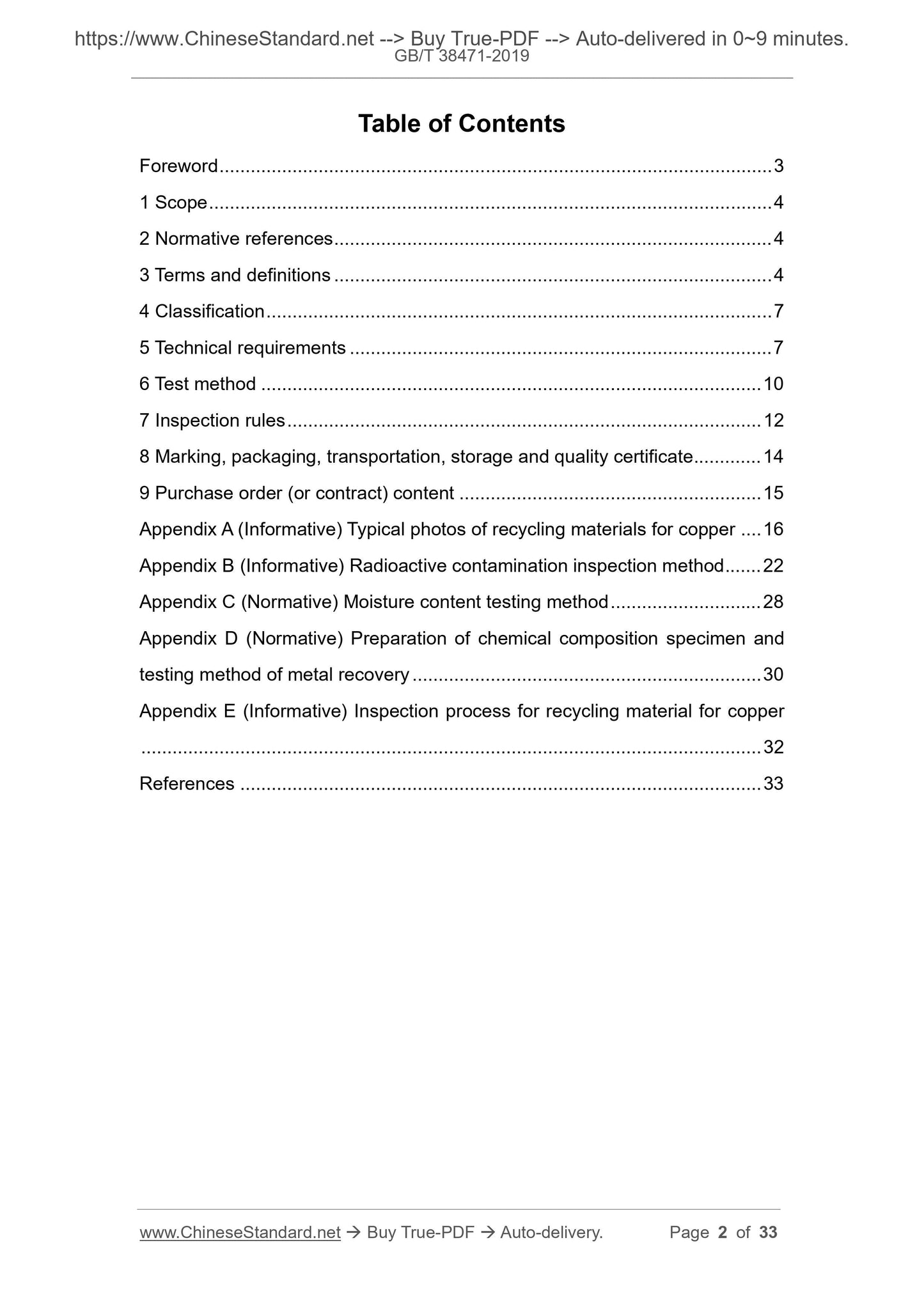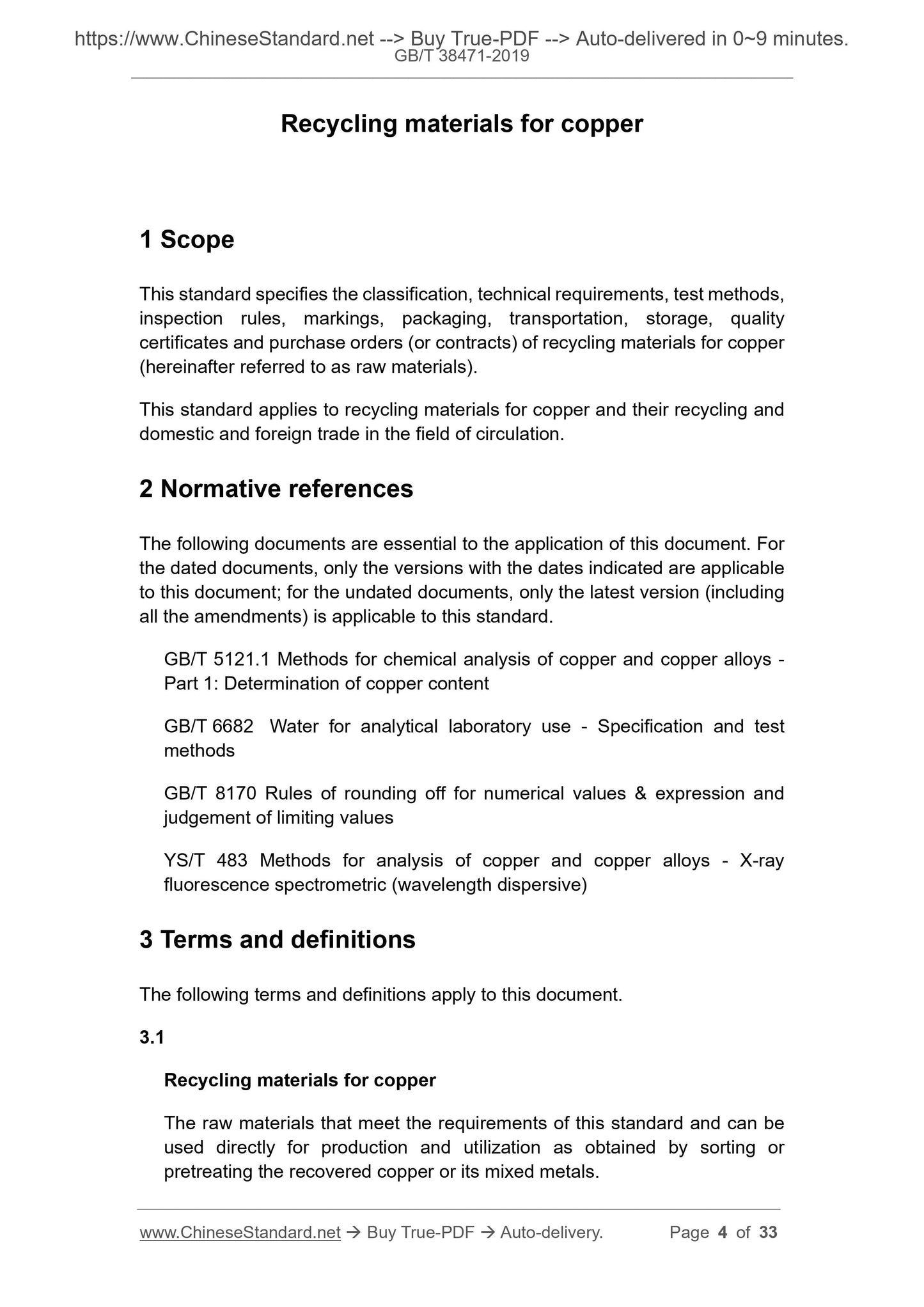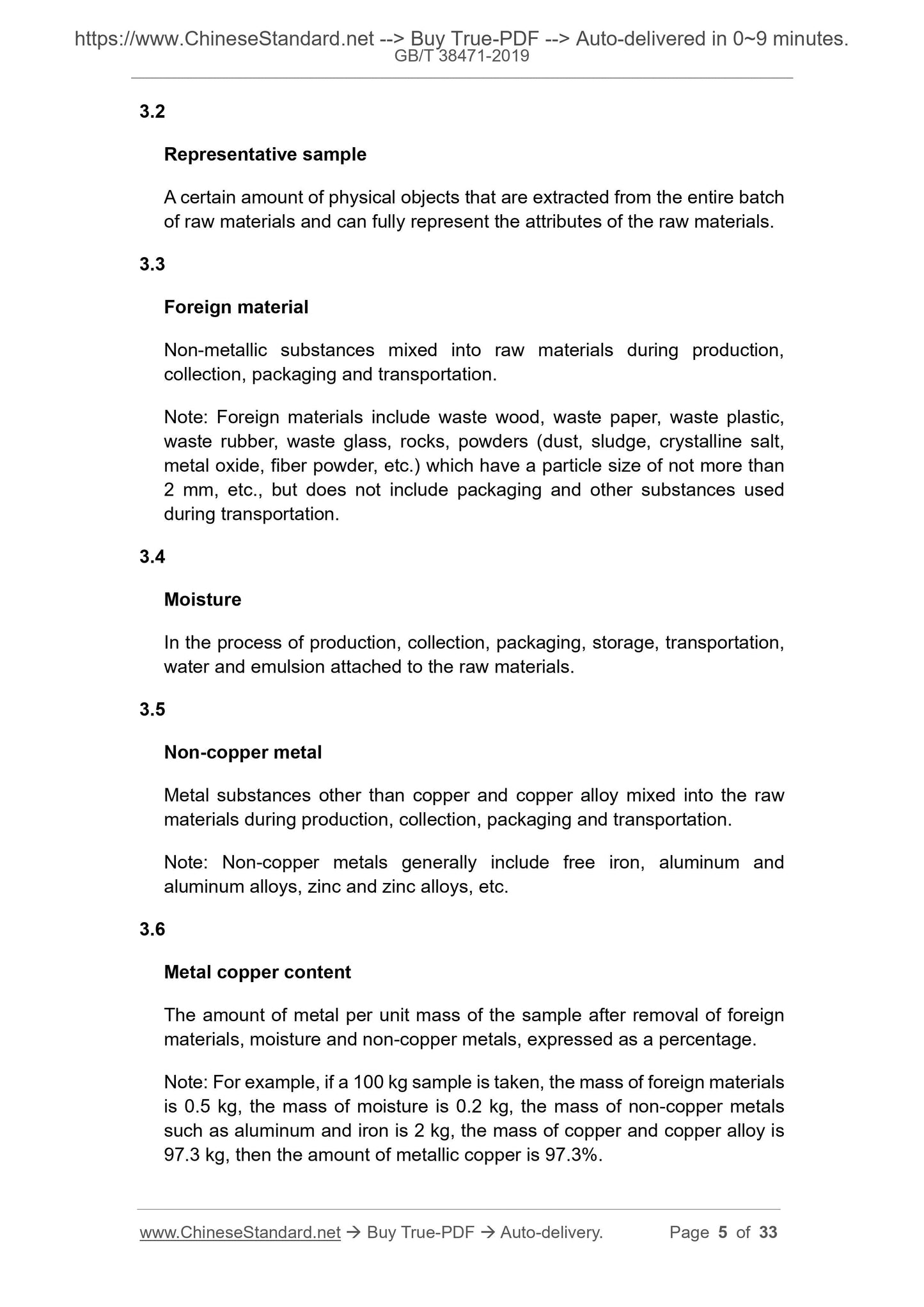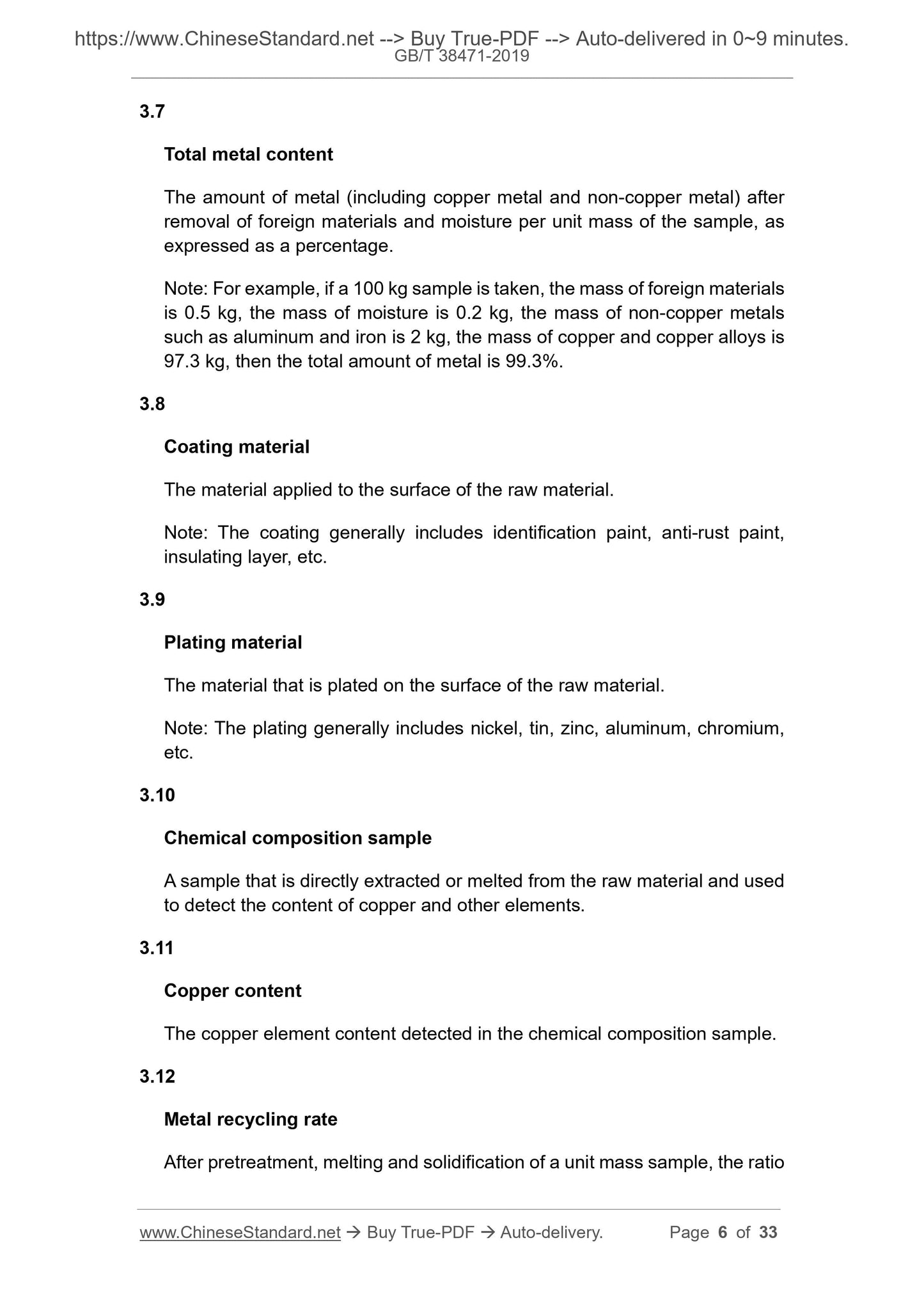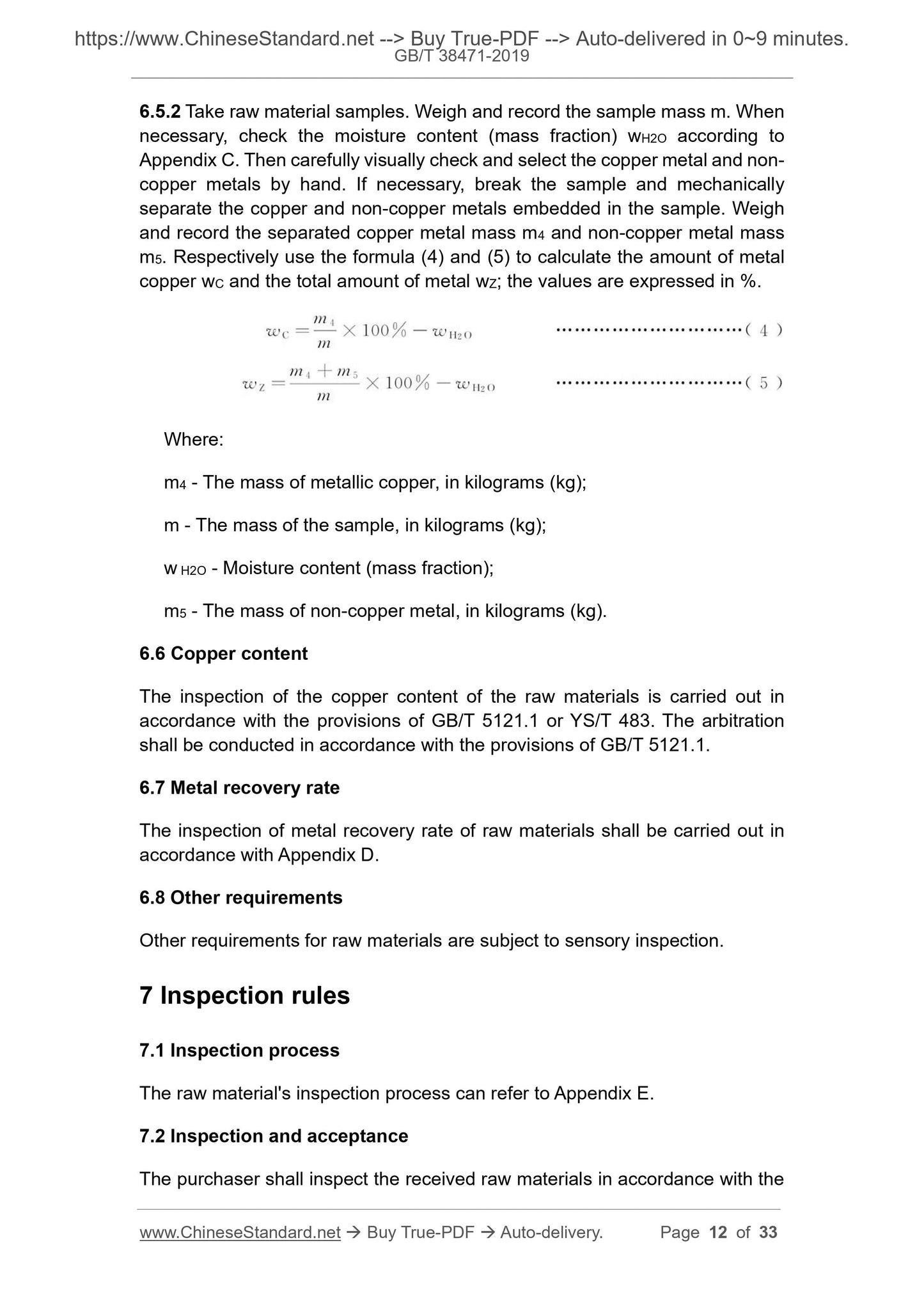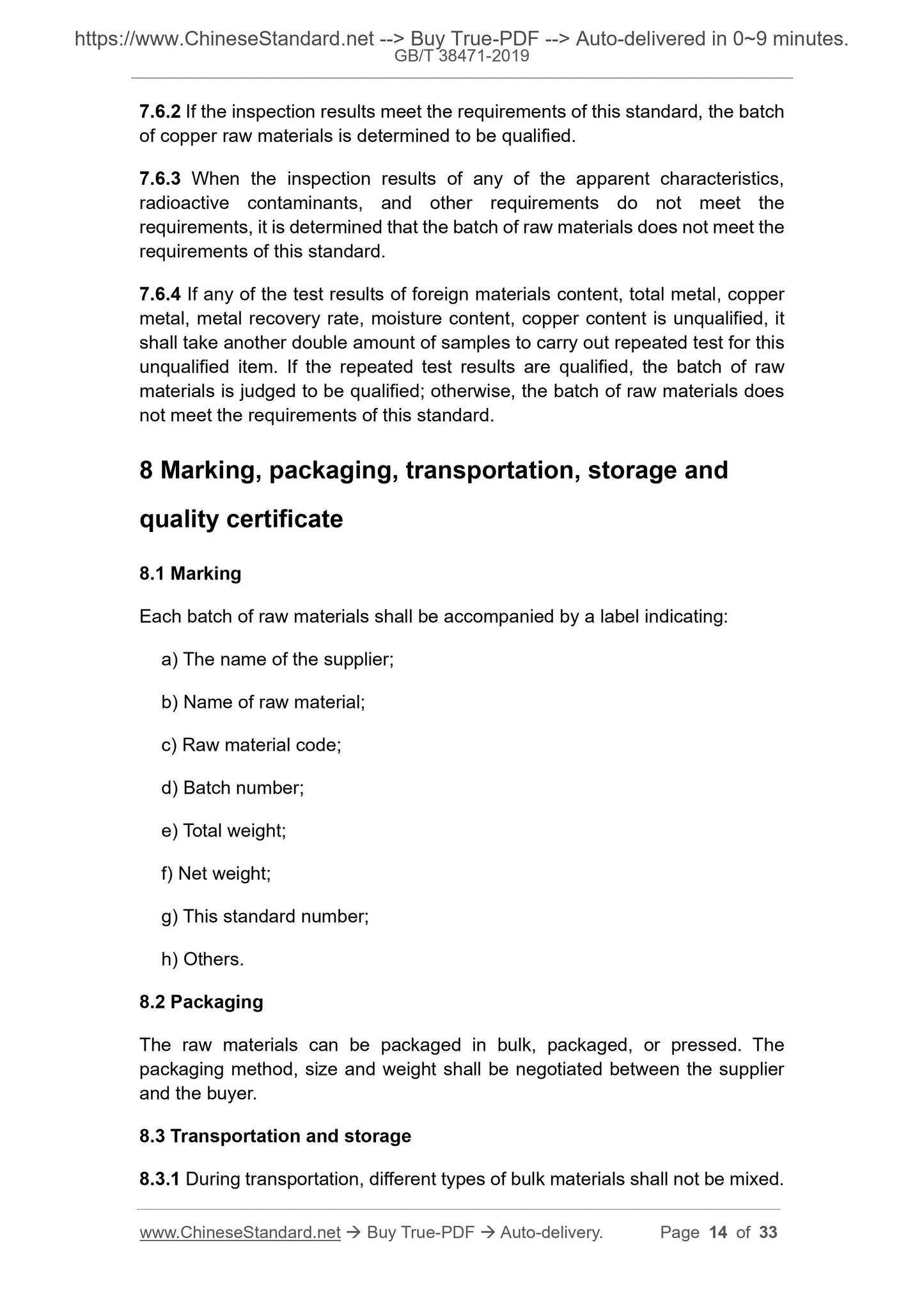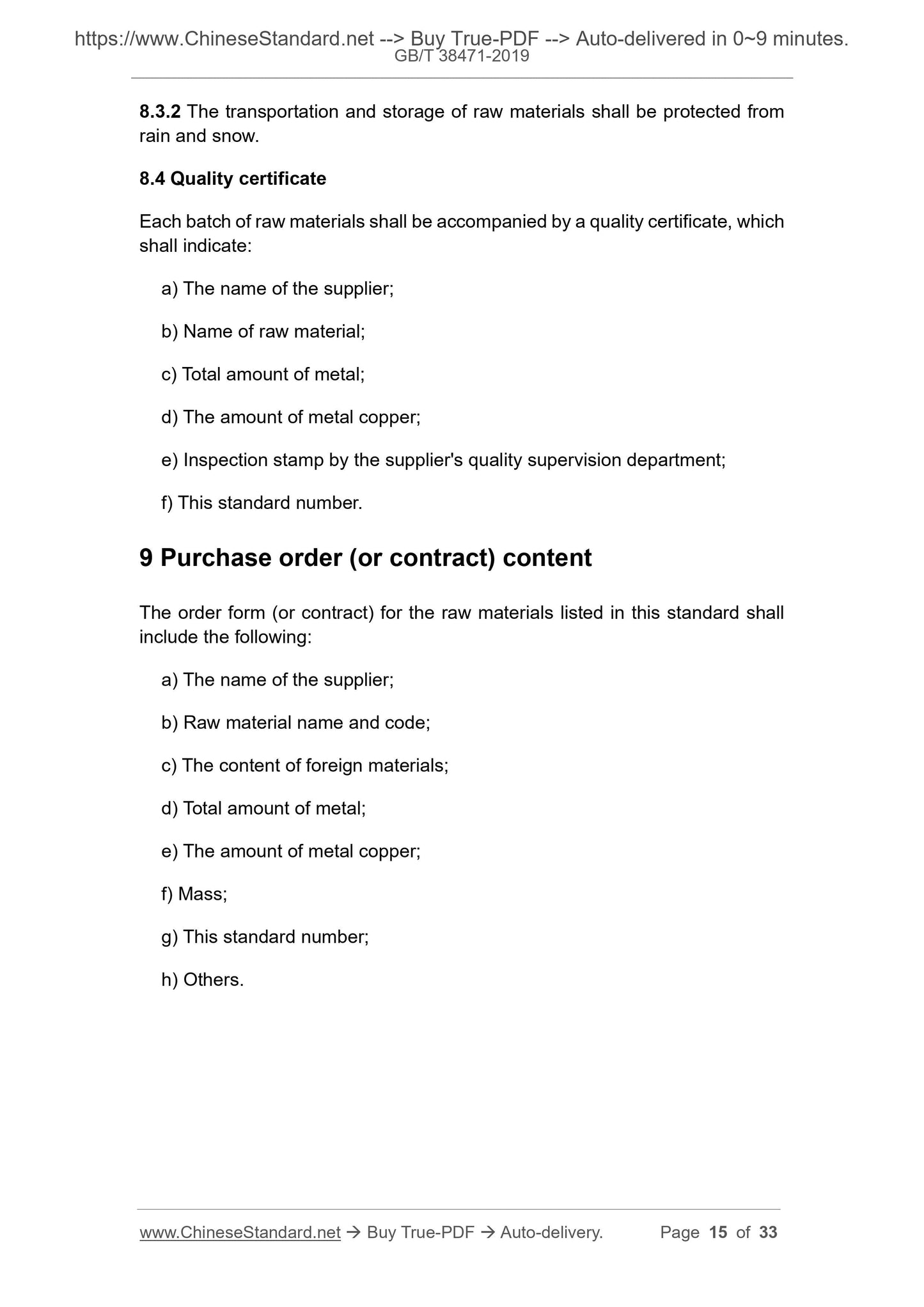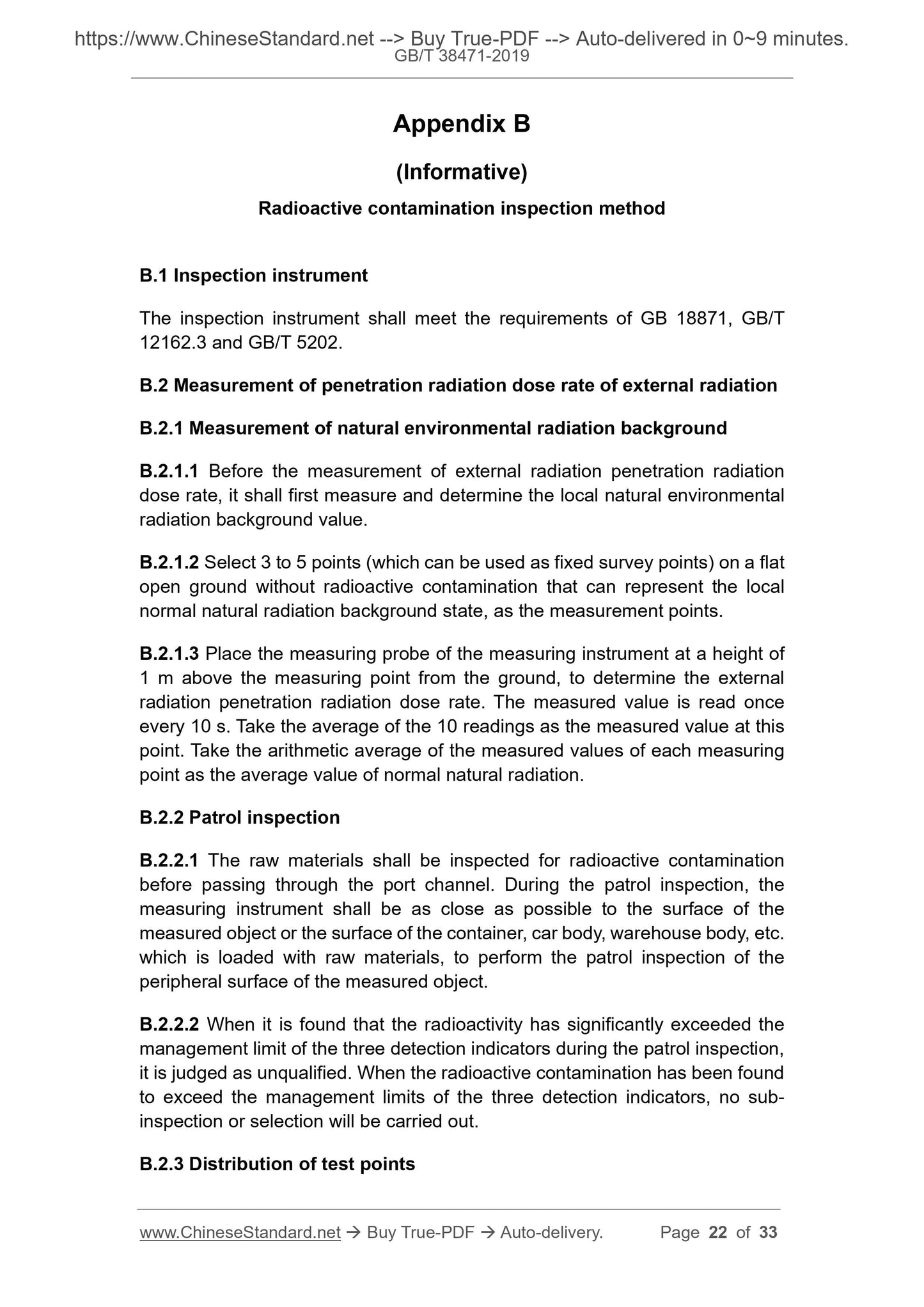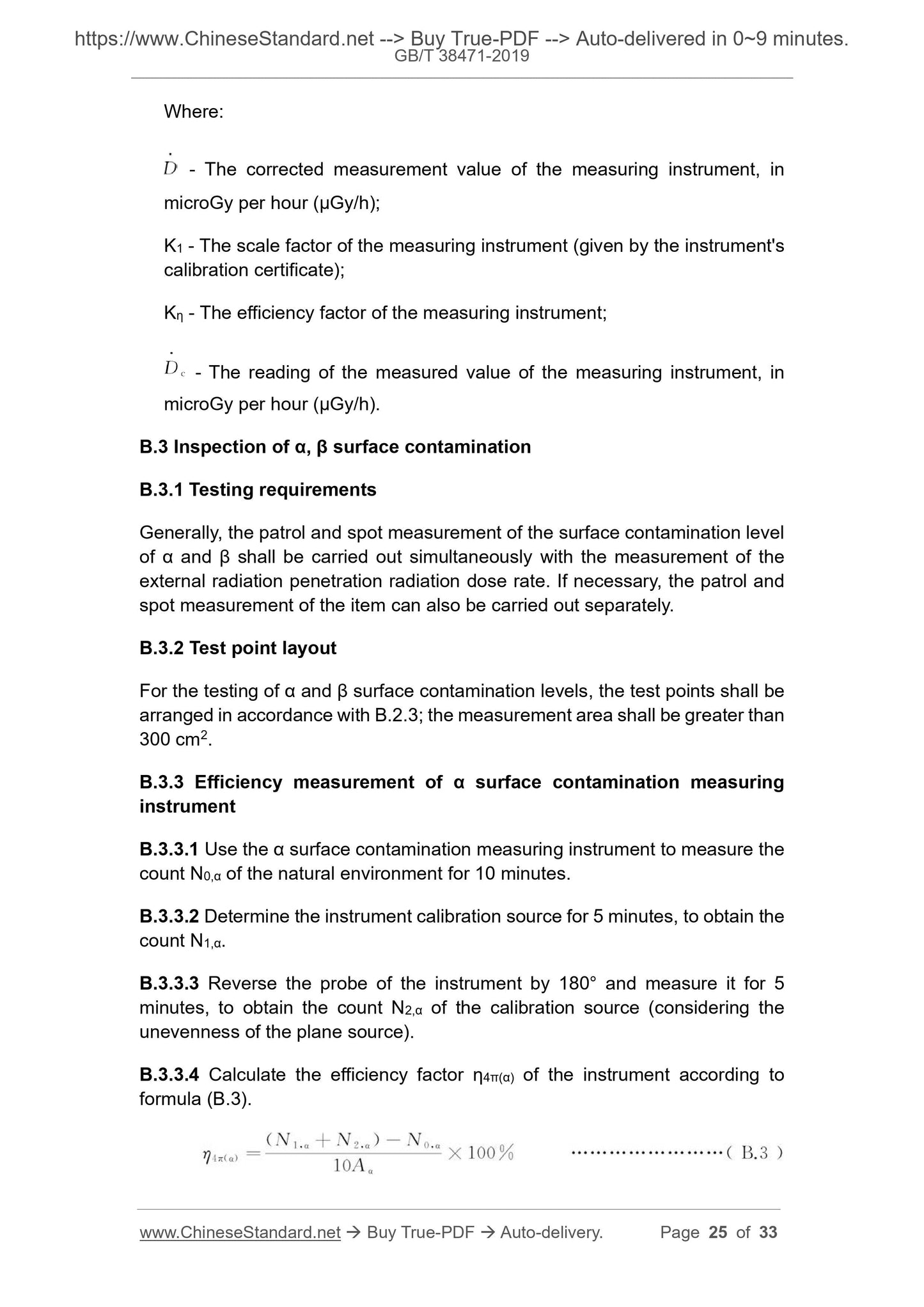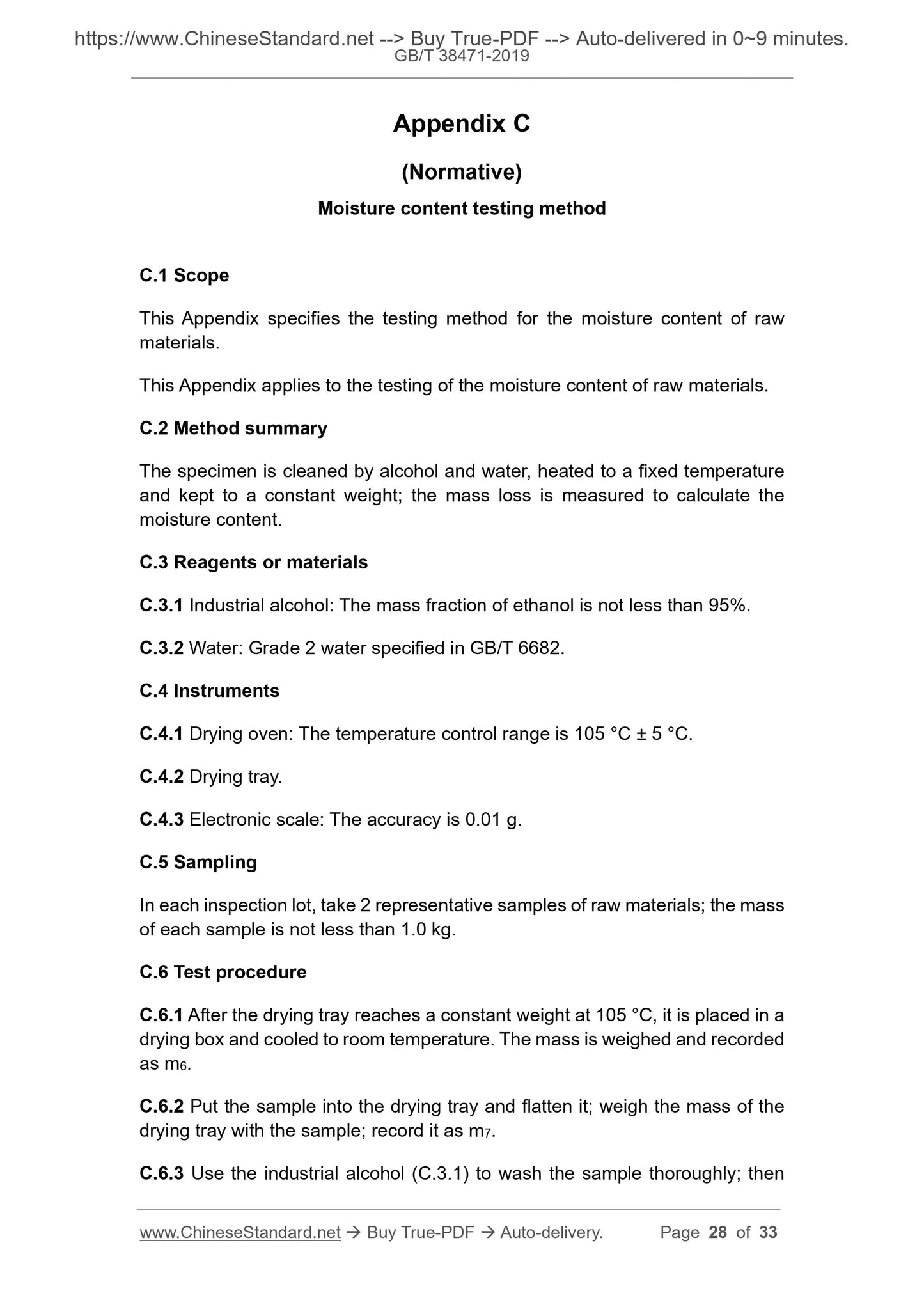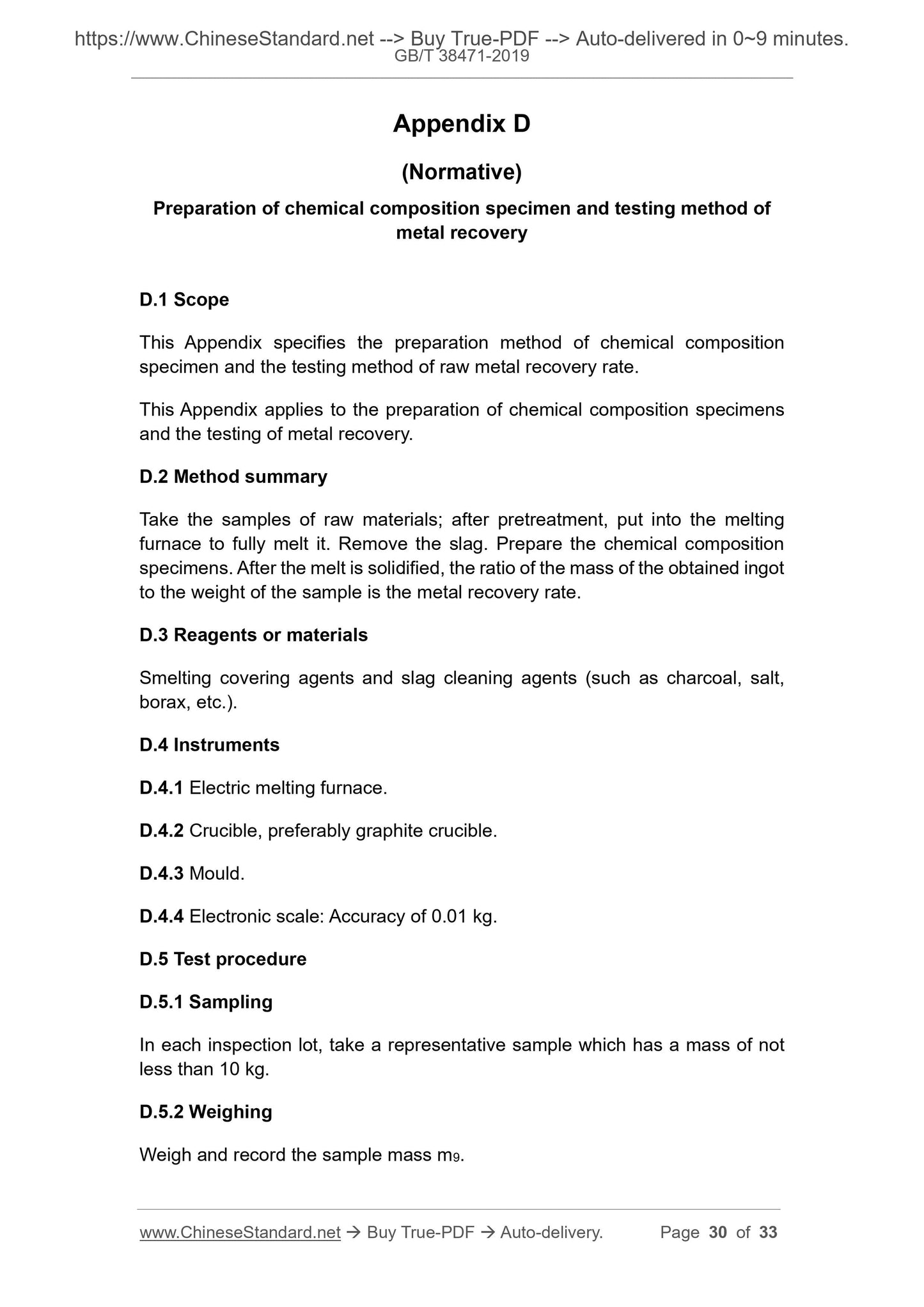1
/
of
12
PayPal, credit cards. Download editable-PDF and invoice in 1 second!
GB/T 38471-2019 English PDF (GB/T38471-2019)
GB/T 38471-2019 English PDF (GB/T38471-2019)
Regular price
$360.00
Regular price
Sale price
$360.00
Unit price
/
per
Shipping calculated at checkout.
Couldn't load pickup availability
GB/T 38471-2019: Recycling materials for copper
Delivery: 9 seconds. Download (and Email) true-PDF + Invoice.Get Quotation: Click GB/T 38471-2019 (Self-service in 1-minute)
Newer / historical versions: GB/T 38471-2019
Preview True-PDF
Scope
This standard specifies the classification, technical requirements, test methods,inspection rules, markings, packaging, transportation, storage, quality
certificates and purchase orders (or contracts) of recycling materials for copper
(hereinafter referred to as raw materials).
This standard applies to recycling materials for copper and their recycling and
domestic and foreign trade in the field of circulation.
Basic Data
| Standard ID | GB/T 38471-2019 (GB/T38471-2019) |
| Description (Translated English) | Recycling materials for copper |
| Sector / Industry | National Standard (Recommended) |
| Classification of Chinese Standard | H62 |
| Classification of International Standard | 77.150.30 |
| Word Count Estimation | 26,210 |
| Date of Issue | 2019-12-31 |
| Date of Implementation | 2020-07-01 |
| Quoted Standard | GB/T 5121.1; GB/T 6682; GB/T 8170; YS/T 483 |
| Issuing agency(ies) | State Administration for Market Regulation, China National Standardization Administration |
| Summary | This standard specifies the classification, technical requirements, test methods, inspection rules, signs, packaging, transportation, storage, quality certificates and purchase orders (or contracts) of recycled copper raw materials (hereinafter referred to as raw materials). This standard applies to copper raw materials and their recycling in the field of circulation and domestic and foreign trade. |
Share
